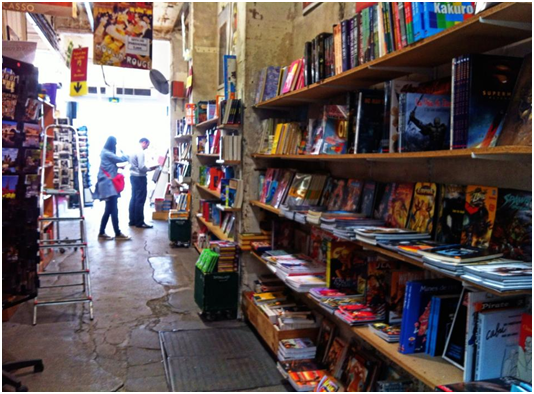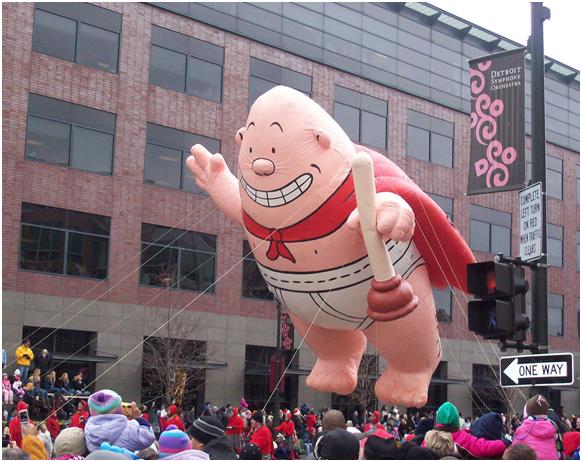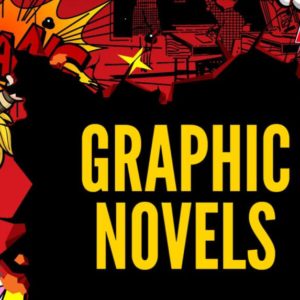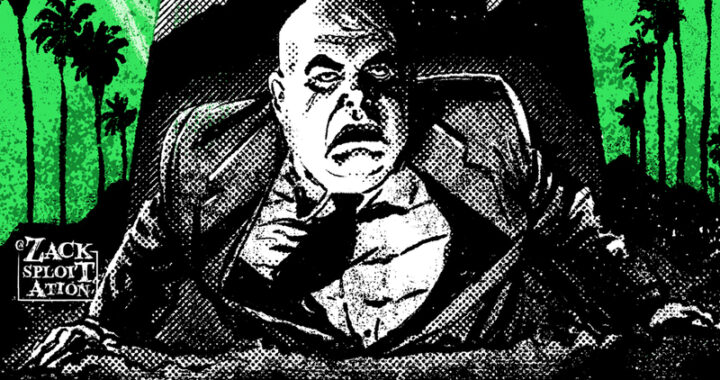
The Enduring Imprint of Alan Moore: How Graphic Novels Advocate for Social Change
If you don’t know who Alan Moore is, my guess is that you know his work. He is responsible for some of the greatest comic series ever written. The British author and cartoonist’s most famous work is Watchmen, the story of Rosharch, a superhero living in a world where masked heroes are a part of daily life, whose former colleague in the world of heroes has been murdered.
The story takes the reader down a rabbit hole of conspiracy, politics and human failing, and fans of the series are devoted to Moore at their deepest level. The book is considered one of the best ever written and won several awards, such as the Hugo Award, when it was published.
However, Moore’s legacy goes far beyond a memorable series and T-shirts with bloody smiley faces. Moore himself is a fascinating person, almost a cartoon character in his own right, with a long history of struggle, being alone in his fight for justice for creators and for marginalized groups in society. Moore retired from comics in 2015, much to our detriment, but his story will most likely outlive him for decades.

It was Moore who gave us the graphic novel, which is an extended, more mature version of the comic book. Graphic novels have captured the imaginations of a broad audience due to their similarities to cinema – the story goes beyond just text, and the images come to life in a way that only happens in a comic panel. This medium has come into the spotlight, though it did so slowly, and more people see just how powerful they can be as a means of social change.

Early Years
Again, we can look back to Moore as the source of inspiration in seeing this mix of art and text as a way of changing the world. Moore first started writing comics and collaborating with illustrators and colorists back in the late 1960s.
“Right from the outset,” Moore is quoted as saying, “the prevailing mindset in British comics fandom was a radical and progressive one. We were all proto-hippies, and we all thought that comics would be greatly improved if everything was a bit psychedelic, like Jim Steranko.”
At such an early stage, Moore already saw the comic, and eventually the graphic novel, as a platform for change. While it took the rest of us quite a while to catch up with him, we can now see just how radical and progressive a good graphic novel can be. These books give us a very different look at the world around us and create a place where usually hushed voices can speak loud and clear.
Fun Home by Alison Bechdel
Take the book Fun Home by Alison Bechdel. The book’s author and narrator is openly lesbian and writes about her closeted, obsessive father and the effect he had on her life. Not only was the book a huge success, but it also inspired a musical by the same name.
It’s hard to imagine any of that happening through any other medium. A story about a young lesbian growing up with an obsessive-compulsive father? That’s a tough sell. And yet, panel after panel, Bechdel shows us how it’s not just a story worth reading, but one we can look to over and over to see a gorgeous story about childhood, deceit, sexuality and love.
Like Moore, Bechdel developed a unique style in her books. Her writing borders on academic analysis while featuring childhood memories.
Her only color of choice is a soft, almost marine blue over masterfully drawn black and white images. The color emits exactly the right emotion, one that we wouldn’t get from photos, traditional paintings or film.
Today’s Graphics
Now, graphic novels are reaching far beyond superheroes and villains. While still paying homage to their roots, this expansive medium is telling all kinds of stories. From the simple yet beguiling Persepolis by Marjane Satrapi, that details her life in and out of Iran, to My Friend Dahmer by Derf Backderf, which takes a whole new spin on criminology, graphic novels are breaking ground in every way.
Educators are looking to graphic novels not just to help their students with literacy skills but also to rethink the world in which they live. Back in 2010, a literature class at Stanford University used this format to tell stories meant to promote peace.
They featured a survivor of two nuclear bombings in Japan who then went to work for peaceful international relationships. What the students found was that through visual communication, they could transcend language and reach anyone who happened to pick up their book.

Graphic Novels and Educators
Many teachers are also taking note of the deeper chord that is struck when a student reads a graphic novel. Many English Language Learners find themselves much more taken with stories like Captain Underpants as they navigate elementary school because they can gather the greater meaning without stressing over individual words right away.
Could graphic novels be the great equalizer? Will it be these carefully drawn pages that bring us together as a race, bypassing the best apps and the greatest social media? One can only hope.
Final Thoughts
Moore himself saw life as a constant struggle for justice. He was advocating for equal rights for the gay community long before it was in our everyday dialogues, and he empathized with anarchists and believed very much in the importance of creating new things.
He has been quoted as saying that he never expected Watchmen to still be in print 30 years after he created it, nor that he would see a new spin-off, Before Watchmen, come out. He claims he’d always expected DC Comics, who published the series, to look for new stories, not recycle old ones.
Perhaps it was Moore’s constant openness to new ideas and new mediums that drove his success. Maybe it was his troubled childhood and clashes with people of wealthier means that kept him looking beyond the boundaries and seeking out new ways to move in the world.
Whatever it was, Moore’s experiences and wild imagination have brought us some of the greatest stories ever written. And, according to Moore, we need stories. Mythology is key to our development as human beings.
“I think that we need mythology. We need a bedrock of story and legend in order to live our lives coherently.”
How has Moore influenced you? Which of his books do you find resonates the most with you as you read it? What other amazing artists has Moore inspired? Comment below and let me know what you think of this unique and talented author.
Images
https://d2lm6fxwu08ot6.cloudfront.net/img-thumbs/960w/FFNGYLQM7X.jpg
https://cdn.pixabay.com/photo/2016/03/03/22/33/anonymus-1235169_960_720.jpg
https://www.flickr.com/photos/surfpark/4139783045








